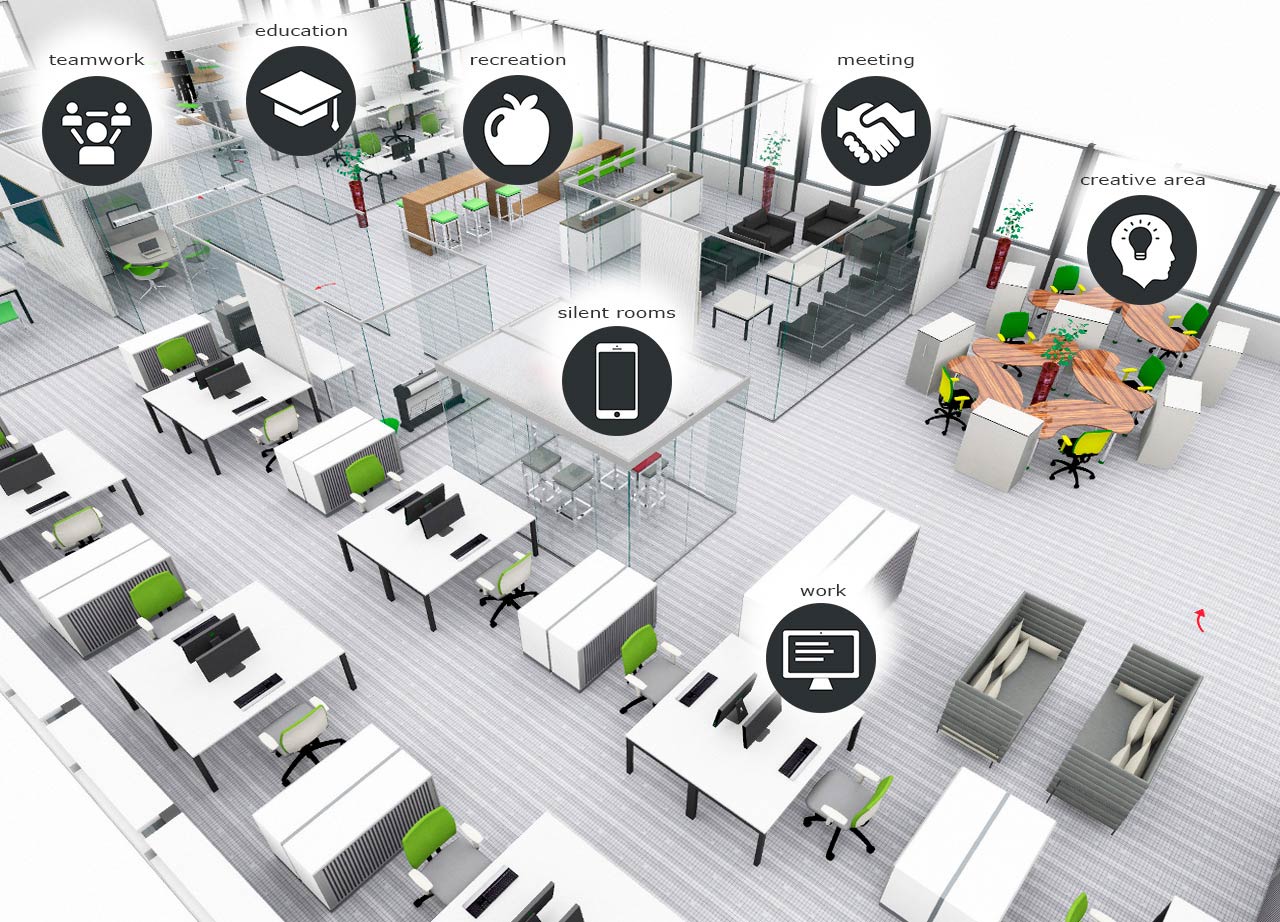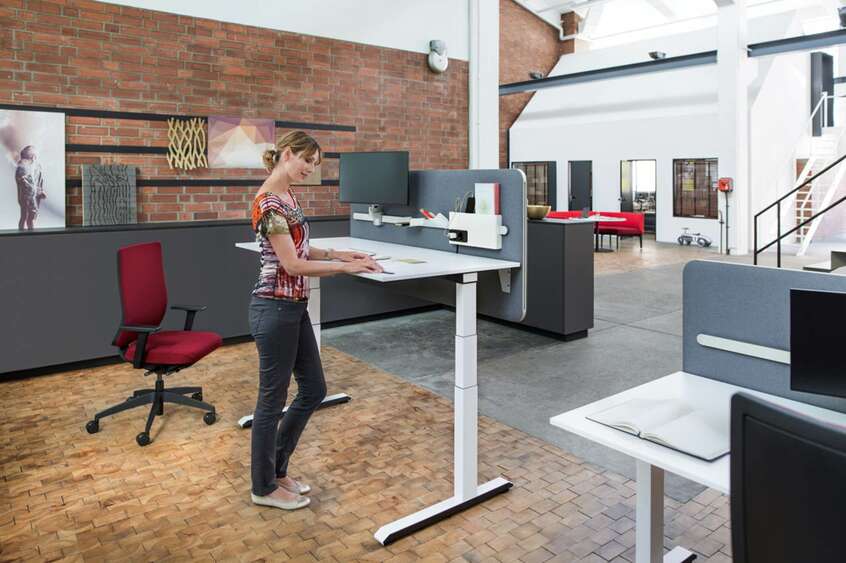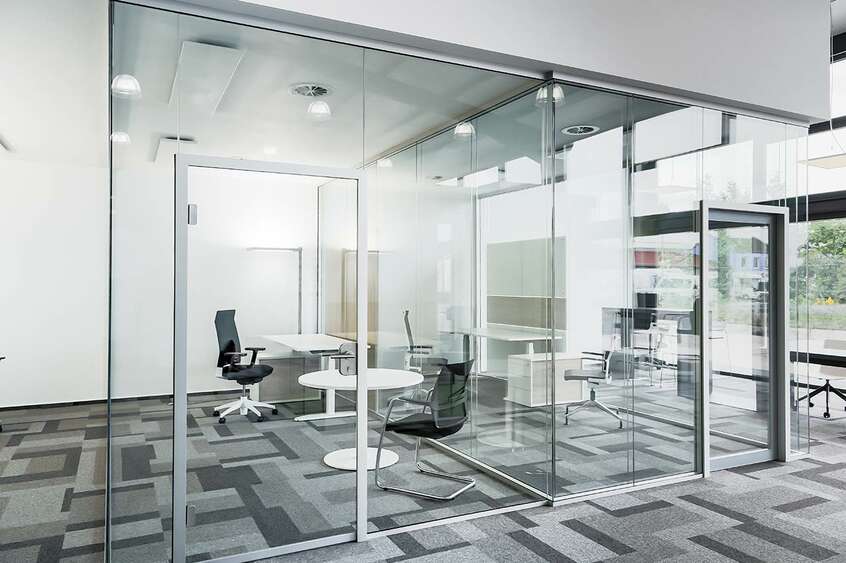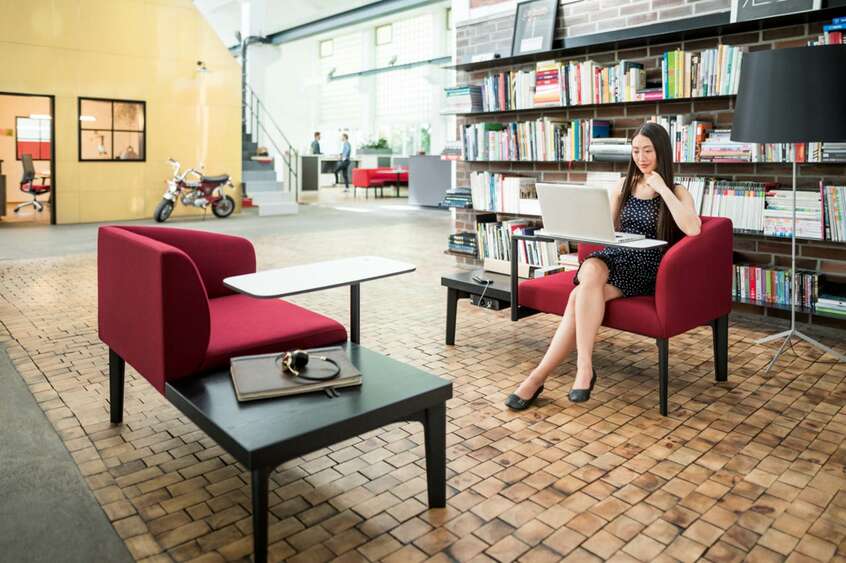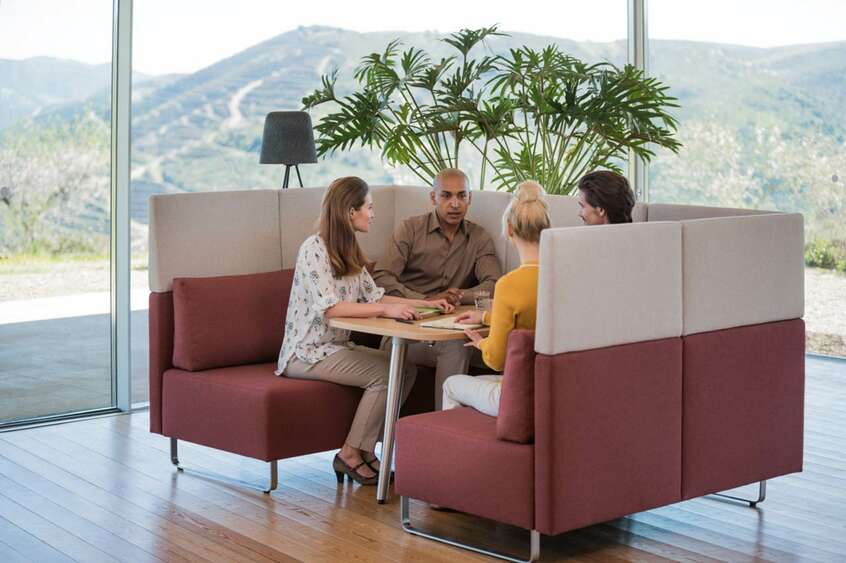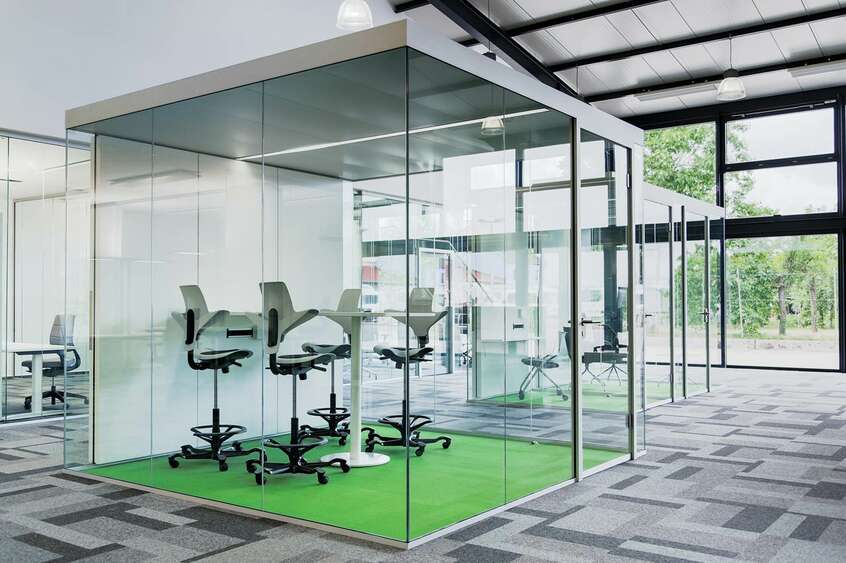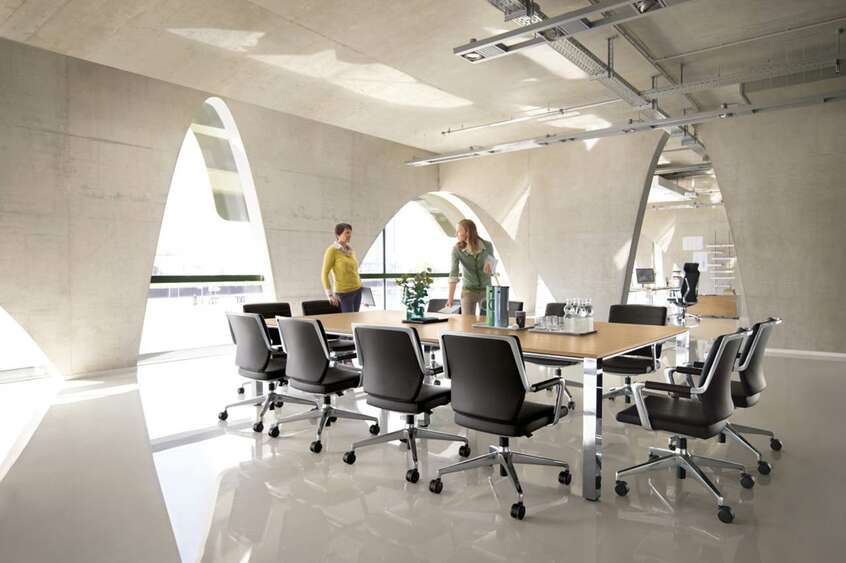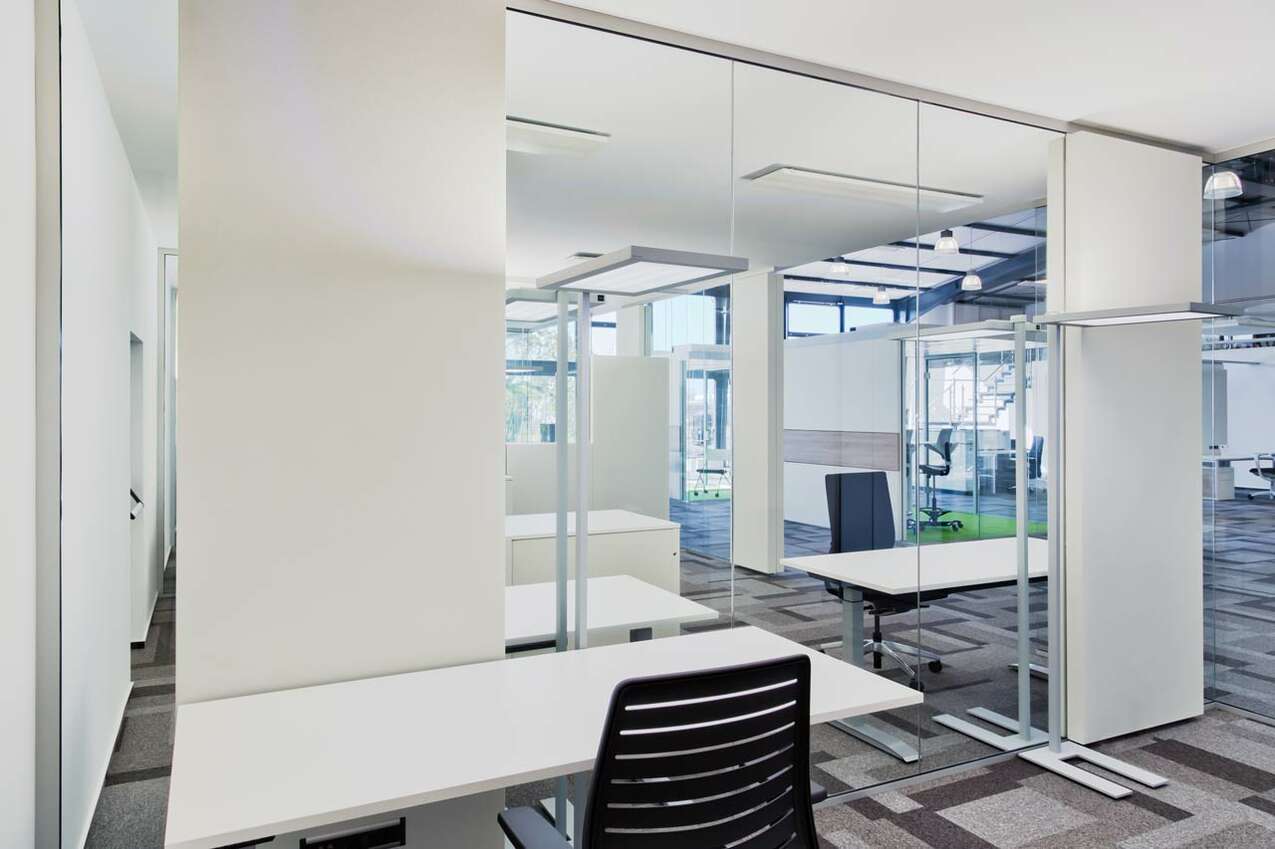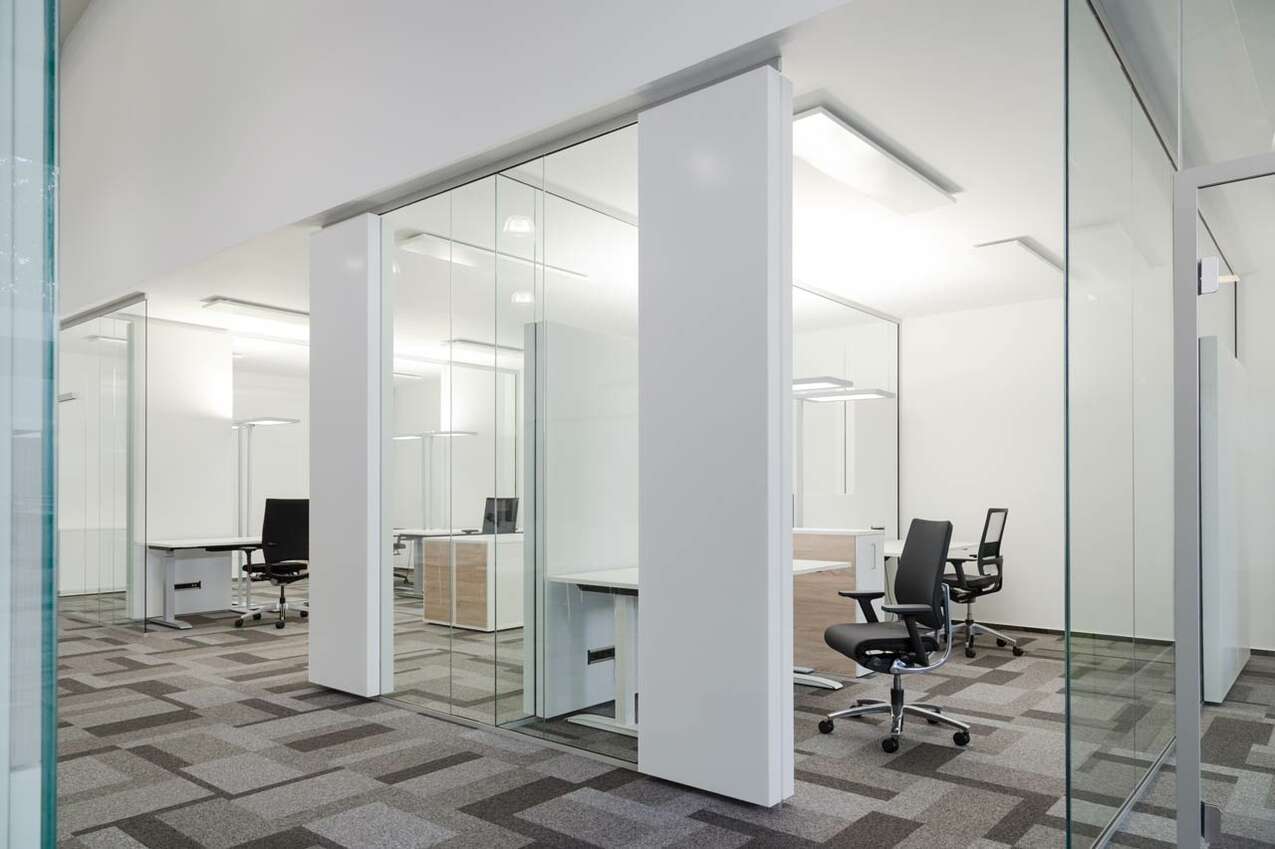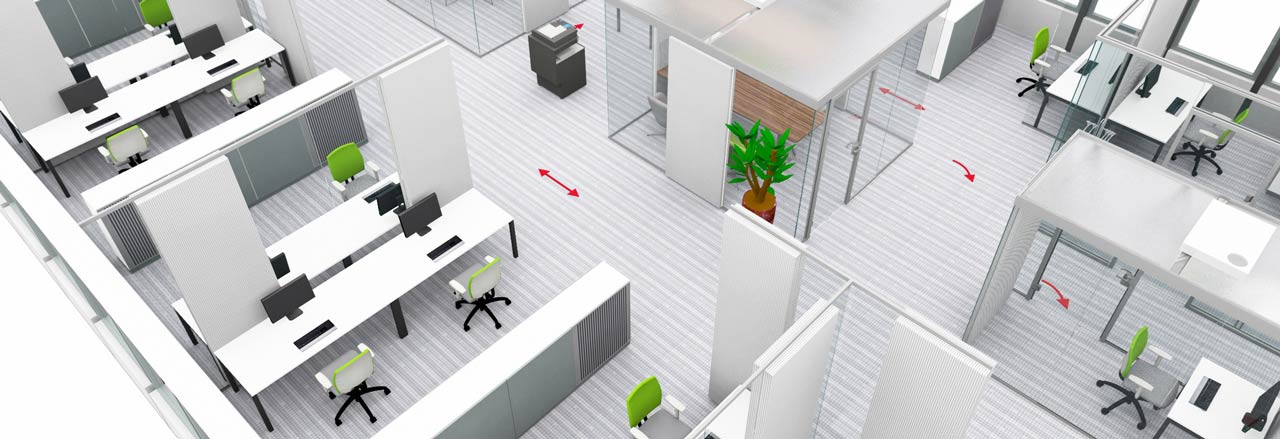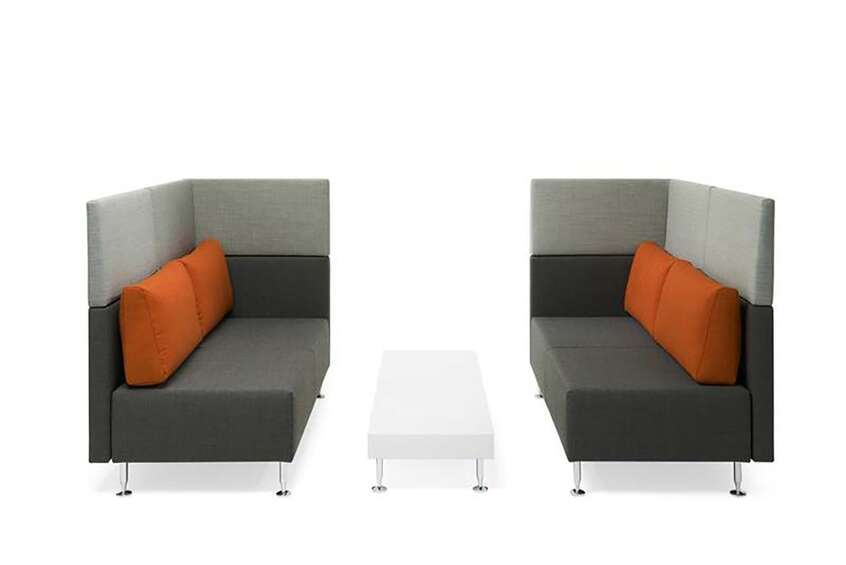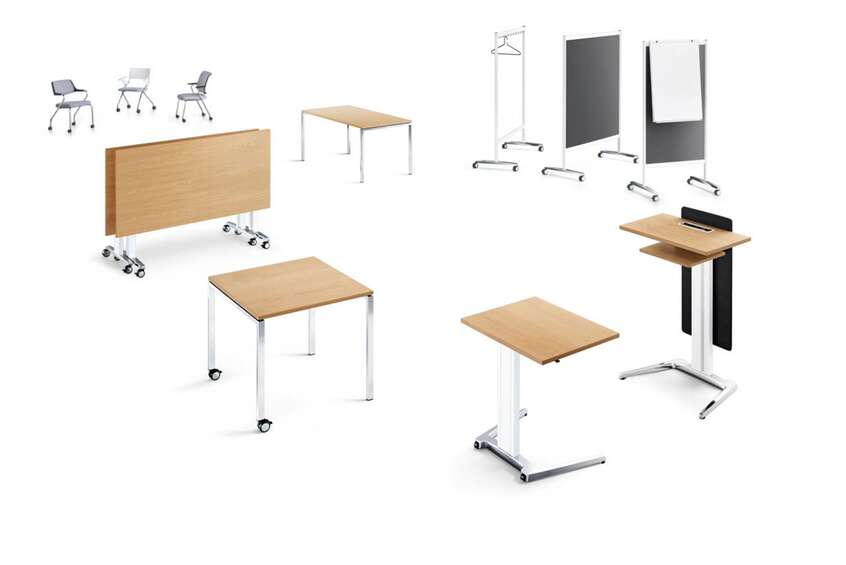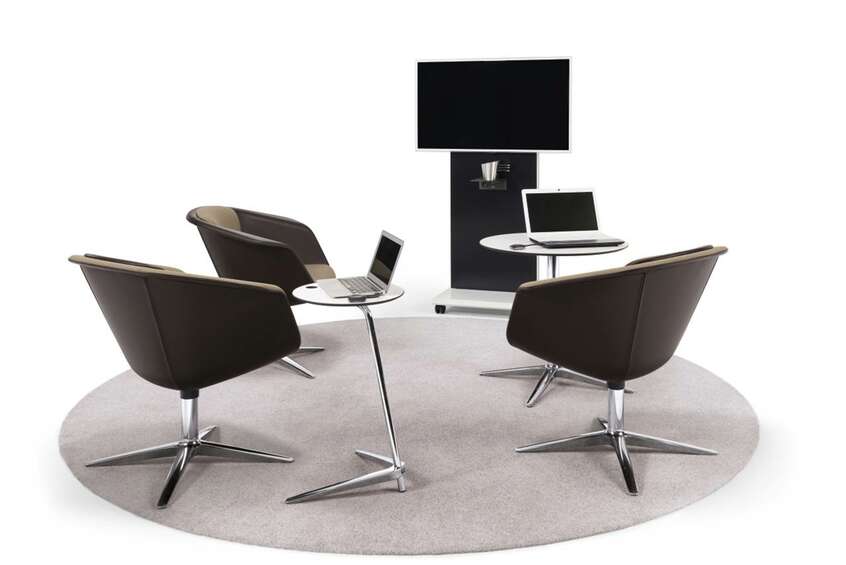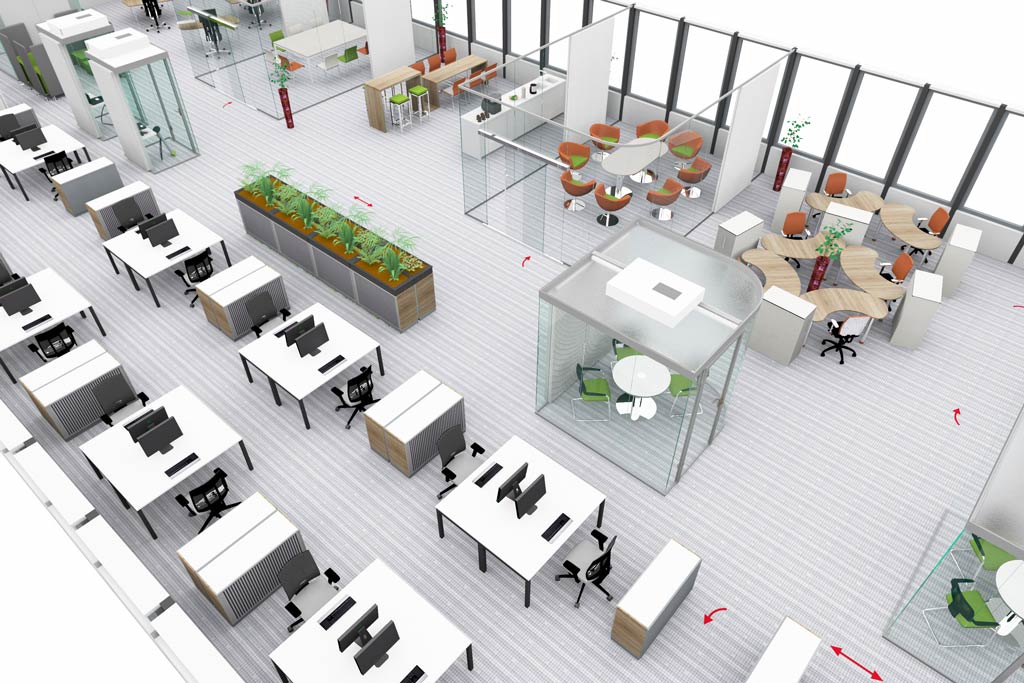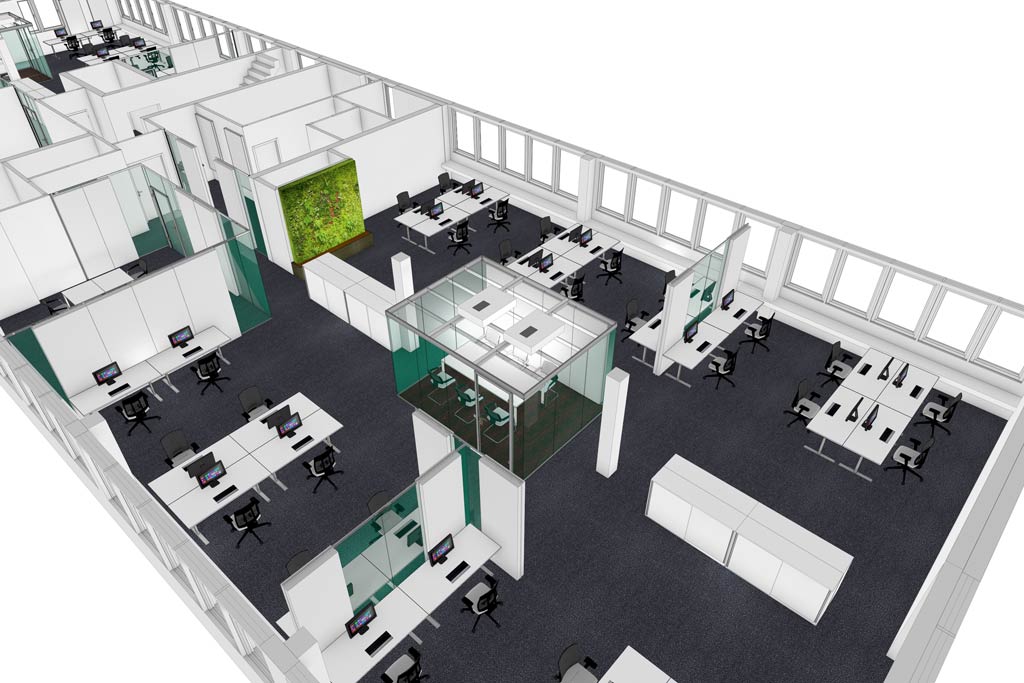
Office planning is the optimization of an existing area or the development of a new building area with the construction planning.
The aim of good office planning is the optimal use of space. We often work with existing office space so that it cannot be changed. There are many constraints that have to be dealt with. This makes our work exciting!
For new buildings, however, the ideal is ideal. Together with the architecture and according to the customer's specifications, it is possible to develop the surface from the inside to the outside. It is worthwhile to examine different equipment variants, different "planning tiles" and their possible influences on the construction grid. It is necessary to think about the demands on a central zone, e.g. as a communication zone. The resulting different building depths have to be considered. It may be necessary to vary the position of the rows of columns.
At the end of the planning process, zones, areas and spaces must be created for working, learning or communicating. To achieve this goal, a structured approach is required. We first have to think very abstractly about the contents of the planning and then gradually go into more detail. The following lines should help you to find your way into our world of thought.
The office must constantly adapt to new conditions
We listen country by country to lectures on the future of work. The reasons are the advancing digitalization, the generation Y, ecological, energetic and economic conditions. They are forcing far-reaching changes in the office. Despite these findings, we are unfortunately still experiencing an anxious persistence in traditional, rigid and anti-communication cell structures. From our point of view, this does not really fit together. How can future-oriented teamwork work when employees, but also managers, retire to "their castles"? Perhaps they only get to know each other by chance, at the table in the canteen. Future-oriented office planning consciously aims to strengthen visual relationships, provoke encounters and communication and create transparency, for the room and subsequently also for processes. It is not for nothing that glass surfaces are so frequently found in modern offices.
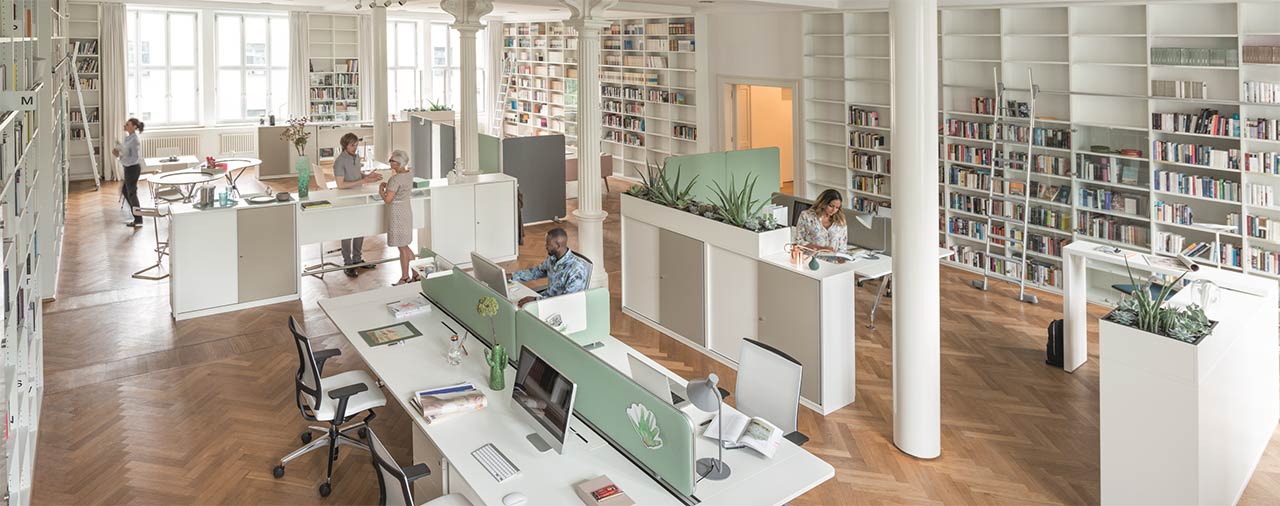
Office planning is responsible for the success of the company
The advancing digitalization, but also megatrends from other areas of life, have a permanent influence on the planning, design and organization of the office living space. Digitization, as well as the development of the trends described in more detail below, are ongoing processes. As a result, planning must also be an ongoing process. The resulting office landscape must ultimately be flexible enough to respond to changes. The emerging office, the emerging office culture must support the success of the company. This also applies when the framework conditions change and appropriate corrections have to be made to the zoning.
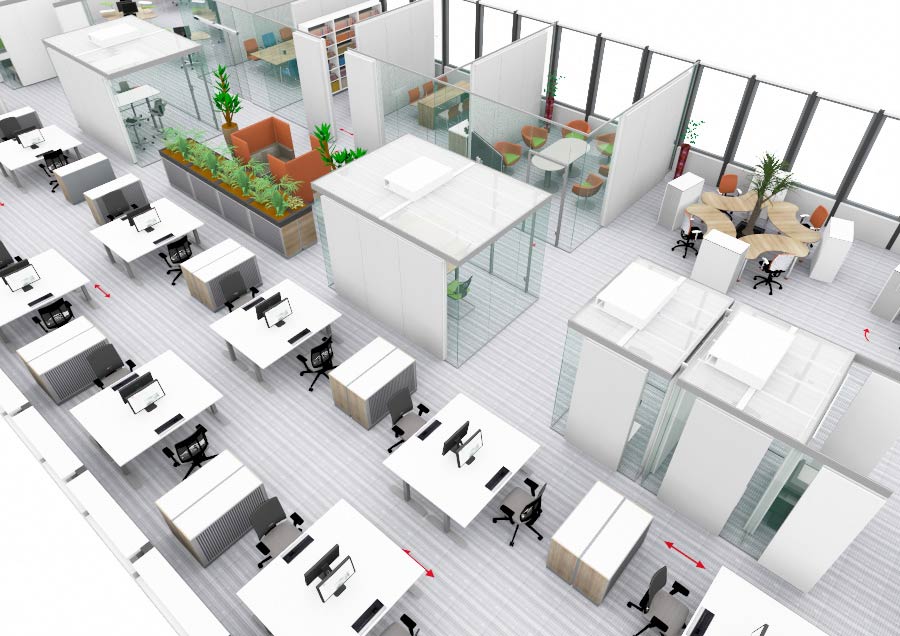
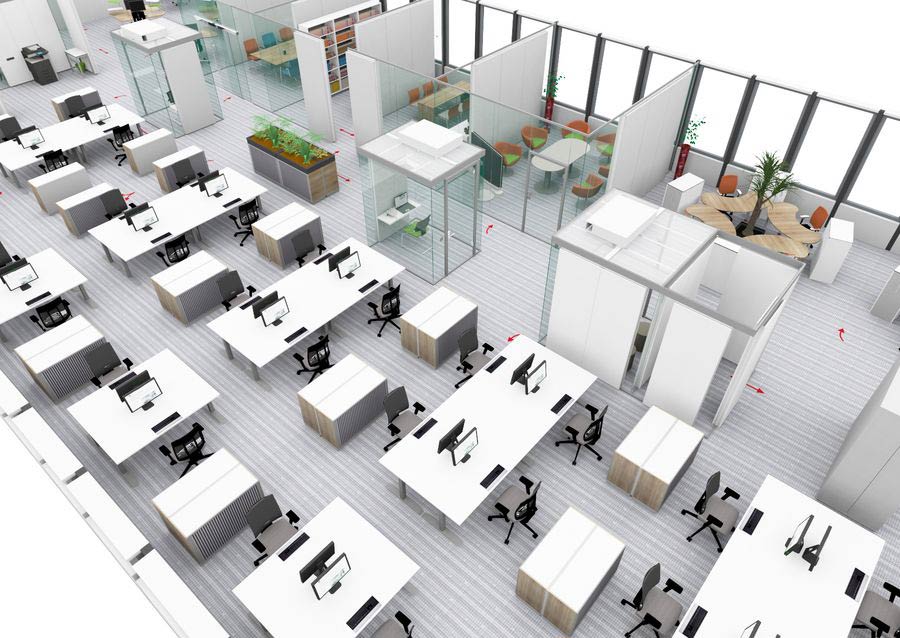
The much-vaunted flexibility must not, however, lead to an "architecture of neglect": the model of "furniture storage on open space", the large area of the 1970s, has clearly failed.
Trend society:
The creativity of office planners is currently determined to a large extent by the tension between an ageing society and dealing with "Generation Y". Recruiting becomes a competition between companies so office planning must play its part in making companies successful in this aspect as well. Furnishing offices for the "mature knowledge worker" on the one hand and the "young dynamic generation Y" on the other is the current challenge for the planner. The "babyboomer" and the "generation Y" have different demands on the workplace than the "place to be". Examples are the acoustic design of the office, the communication suitability or simply the lighting. The classic cellular office is certainly unable to reconcile these different requirements.
Quote from the Hays Blog "My boss and me - Babyboomer vs. Gerneration Y": So, what distinguishes my generation (Attention: exaggerated presentation)? We are well protected and grew up with the internet, technically affine, well educated, self-confident and looking for a challenge. We are interested in content and exciting projects, but do not necessarily aim for a management career. A work-life balance, a relaxed working environment and fun at work are more important to us than a salary. We were raised to be self-employed and don't think much of rigid hierarchies. read more.
The permanent change of society and the work in harmony with modern media currently brings us the trend towards open and flexible changing office space forms.
Trend environment:
We consume too much energy, produce greenhouse gases and waste resources and land. In September 2015, at the UN Summit on Sustainable Development in New York, the global community set new goals for more sustainable development over the next decade and a half. Longer-term targets have been set for construction in particular. We have set ourselves the goal of making our existing buildings almost climate-neutral by the middle of the century. Literature: The Federal Ministry's Guide to Sustainable Building, Passive House, Zero Energy House, Building Component Activation and similar terms must not be foreign words for office space planning. The office planner must be aware of the effects of these developments on the use of office space.
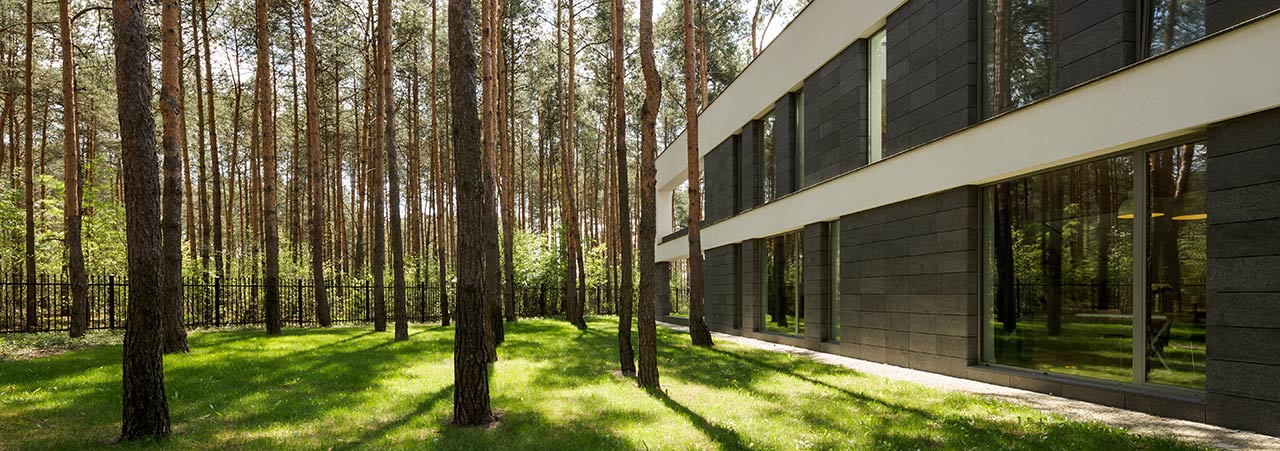
The activation of building components requires special attention to be paid to acoustics, especially against the background of the described trend towards open and communicative surfaces.
Trend Economy:
We waste space and as long as we do not change this, we do not provide optimal planning and thus do not create the optimal basis for the economic success of the company. Again and again we come across interlinked multi-surface tables and rigid cell structures. Typical quote: "We just have this furniture! This means that optimal use of the space - and this is not simply the same as densely populated areas - cannot be guaranteed. The multi-surface table is no longer justified today. Two flat screens, central printing, copying and scanning, the trend towards paperless offices and compact filing systems make these oversized work surfaces superfluous. There is still enormous potential here. That's something to touch.

The cellular office, repeatedly praised as the non plus ultra of concentrated work, is an acoustic catastrophe. This apparent contradiction is easily explained. Cell offices are only in very rare cases individual offices. We almost always talk about multi-person offices here. 2-4 workstations are usually housed in a closed room. How is this situation supposed to work acoustically? The syllable comprehensibility across the workplaces is 100%. In these compact "sound bodies" nothing can be saved acoustically. Simultaneous telephone calls are not conceivable. Can this be effective? In addition, the cellular office does not allow a central zone. Communication is not given enough attention.
The cellular office model may have been attractive in the 1970s, when a group of tables shared a screen and a telephone, when office work was still largely characterised by "keeping and maintaining the file".
The office of the future is open - with facets
The world is changing faster today than ever before. The "daddelnden" children of yesterday are our young employees of today. Everything has changed. They communicate differently, they learn differently, they network differently and maintain their social contacts in other ways. Who still believes that such young talents want to be locked up in cells? They want to experience stimulating, open, inviting and communicative working environments. They want to see and be seen. They are prepared to work in different places with different spatial qualities, be it because of the special sub-task or simply to have other colleagues around. You require a variable work environment, but not a personally assigned table.
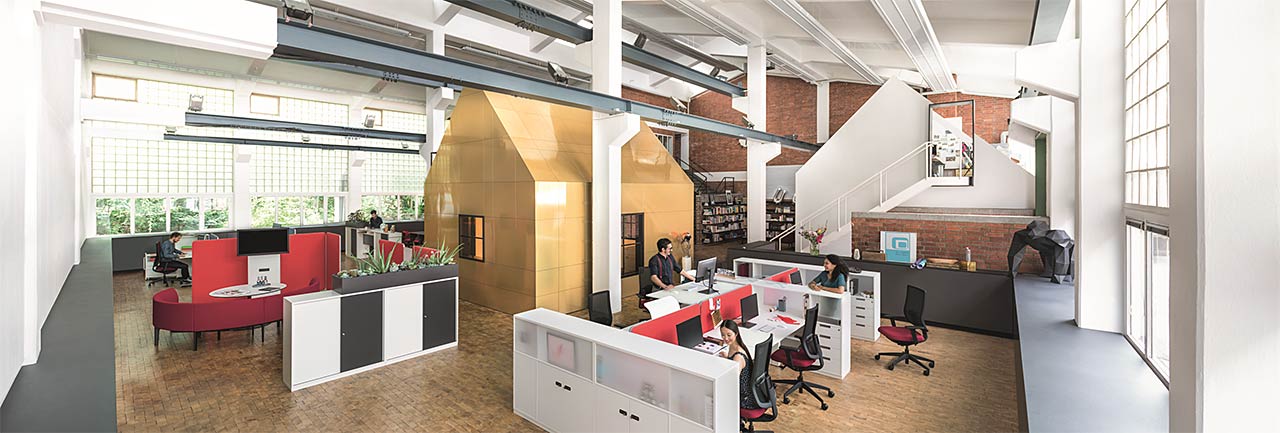
Area coding creates zones with silent messages
The task and therefore the planning approaches differ from customer to customer. Certainly the requirements of a law firm will lead to an office model "x", while the usage specifications of an advertising agency must lead to a model "y". Nevertheless, the planning process is always based on a schematic approach. After all, legal requirements must be followed. Above all, the extensive workplace guidelines must be observed and brought into line with the available space. The specifications go so far that the planner can or even must work with a series of standardised "planning tiles". However, the ASR specifications should not be perceived as a burden, but rather as the basis for good function and a healthy office environment.
The power of spaces
Irrespective of the ASR regulations, we recommend that the total area be divided into coded partial areas. These zones or even rooms, once fully prepared, must send a silent message to the user. Thus a conference room has to be designed differently from a training room, the "work space" has to be designed differently from a "teamwork area". The zone should immediately communicate to the user the purpose for which it stands. The "traditional" tea kitchen is always a popular example. Transform it into a communicative "work cafe´" and the same area can supply much more than hot and cold drinks.
The office space planning codes areas
First and foremost is the zoning of the surface. Every company, every office has tasks that have to be carried out very concentrated and alone. Here it needs "me-zones". There are also problems that can only be solved through interaction with colleagues, i.e. in a very communicative way. This requires "we-zones".
Background: Success needs a change of communication and concentration
Managers are convinced. Employees should work and communicate in teams as often as possible. Of course the permanent availability of the colleagues. Systems such as Skype and similar switch employees to "always on". Now a study shows limits. A large-scale experiment with 600 small groups provided the proof. Scientists had the test subjects solve tasks under three different conditions. Condition 1: the test persons had no contact with each other. Condition 2: the persons had contact after each round and could exchange experiences. Condition 3: the subjects had contact after each THIRD round and were able to discuss their solutions. The expectation of the scientists was that condition 2, i.e. the constant possibility of communication, would bring the best results. Missed, this expectation was not confirmed! The best results were achieved by colleagues working according to condition 3, i.e. alternating between communication and concentration. The possibility to communicate in intervals, but also to work concentrated afterwards, improves the results of the low performers as well as those of the high performers. The insight into the work of the colleagues is important, but also sufficient time available to reflect this information concentrated. Source: Ethan Bernstein et al.: "How Intermittent Breaks in Interaction Improve Collective Intelligence", Proceedings of the National Academy of Sciences, August 2018.
Let's build a bridge to modern open office space. Communication is not neglected here, one thinks. But can it take place without disturbing colleagues? A sufficient number of retreat areas are important. Room-in-room systems are a suitable means. Close to the workplace, clearly visible, easily visible and without booking scenarios, the think tanks offer the necessary retreat areas for teamwork, conferences, telephony or simply maximum concentration. In return, the area on the façade becomes free of conference rooms. These 1a areas are therefore fully available for workspaces. This increases space efficiency. The room construction is trimmed for flexibility. The free-standing rooms can be moved quickly and without loss of material.
Office zones
Alone zones / me zone
concentration: Focus, Discretion, Informal Solo (Research)
Reflection and contemplation: relaxation
Team zones / we zone
communication: Training, contact management, presentation, nodes, confidentiality
teamwork: Brainstorming, Informal work, Teamwork
For each company it is important to find the individual mix
We discuss with you how important each zone is for your service delivery and how often it is used by whom, so that we can define the capacity to deliver. It's also important to think about where each zone makes sense to be. This is where you need to decide which zones should be kept separate, however, and which zones should be merged. So parts of the "single zone" can be merged in an open "work space". Parts of the "Team Zone", e.g. account points and contact maintenance, can often be merged in the "work cafe".
Room and acoustic structures help to realise the zones
Assigning surfaces to these zones is now the first step in the direction of spatial structures. Not in all cases does this structuring result in the necessity of adding walls. Often, however, they help to create the desired "acoustic distance" on the limited total area. Even very different zones can function in direct proximity to each other. The planner is well advised to adapt the room structures to the communication and concentration requirements in equal measure. Open office spaces also need acoustic structuring. Sound barriers or resting modules positioned correctly offer effective acoustic solutions without restricting the transparency of the surfaces. The change between teamwork and concentrated individual work must be supported. To this end, the planner must create retreat areas. Room in room System can also offer flexible and space-efficient solutions for communication and concentration for open space or large offices. However, it is not only walls that appear as factors of good overall planning.
Area:
The handling of the surface must be checked again and again. What space requirements are justified for the team strength? Where should the unit be positioned? How are the limits of economic efficiency defined? Who uses the space at the window? How do we use the middle zone? The depth of the building plays a major role here. Which "planning tile" do we use to map all the necessary zones? How is the facade structured? Are we looking for a connection to the façade, e.g. to optimally design acoustic concepts or do we remain free of the construction grid? For the new building, the question arises whether the building grid can be developed and influenced? It is economical to examine different planning variants, different "planning tiles" and their influence on the building grid. The definition of the requirements for a central zone is important. Do they only need a traffic route or should the central zone rather become a meeting place? This results in requirements for the optimum building depth and possibly for the positioning of the rows of columns.
Lights:
Ergonomics at the workplace are significantly influenced by the quality of the lighting. The well-being and health of the employee is supported by professional lighting. It should be discussed whether uniform ceiling lighting should be used or whether an individualised solution, for example with a standard luminaire, would not be better. Modern luminaires can be equipped with presence controls and offer the possibility of dynamising the light, i.e. adapting it to the requirements of daylight incidence. Biodynamic systems are currently appearing on the market. The light colour is adapted to the course of the day. You should know and be able to evaluate the options. Ultimately, light and luminaires are suitable media to fundamentally influence the coding of rooms.
Acoustics:
The decision maker must become familiar with the relationship between sound dynamics, reverberation time and sound insulation. Good acoustics are possibly the most important key to a well-functioning office design. Only a good acoustic concept, a good acoustic structuring of the surface allows the way into an open, future-oriented working environment. We deliberately use the term "acoustic structuring", because the usual reduction of the reverberation time alone is not effective.
Space structures:
How can the different zones be sealed off from each other? How far does the acoustic isolation have to go in a specific case? The factor of sound dynamics has to be taken into account in order to remain economical. For example, it is not economical to seal off in the direction of open space with high sound insulation values if the basic noise level here is already 50 dB. How discreet are the zones to be kept? Do room structures have to be opaque or must they remain transparent in order to serve the open basic concept? Room systems and their use in planning have a decisive influence on the resulting coding of the zones and on the office culture. Partition wall systems with low glass content, e.g. dry partition walls, cannot create an open, transparent and thus communicative office culture. Glass walls or even frameless glass walls, on the other hand, create modern and light-flooded room situations. If the planner uses these systems, he intentionally strengthens the direct visual relationships on the surface and thus creates the basis for a communicative office culture. The same applies to the use of sound-reflecting materials. Open room structures need acoustically highly effective systems to prevent the desired communication from becoming a burden.
Furniture functions:
From our point of view it is important to think about the dynamic standing / sitting design of the tables, at least the tables in the "work zone" and the tables in communication areas. We don't have to roll out the all too widespread topic of ergonomics here again, and yet it is economical to support the maintenance of employee health. Furniture can also take on zoning tasks. However, caution is called for here. Those who go beyond the necessary storage space will burn areas. Furniture also has a decisive influence on the coding of rooms. A "meeting point" or a "work cafe" does not have to have chairs. Another communication room even needs lounge chairs. The library needs an open bookcase with specialist literature. The "recreation area" doesn't need a beach chair and yet there should be a noticeable resemblance to recreation. A green wall can move a lot here.
Floor:
A modern carpet is the right choice for your office space. For the "work space" and the communication areas in open office worlds, the carpet offers enormous advantages in terms of impact sound insulation and running comfort. The carpet benefits from better air quality due to the binding of dust. Meanwhile carpet systems are offered, which proclaim an air-purifying effect for itself. When choosing the right carpet, carpet tiles should be considered. The advantages for the office are obvious. Double floors in particular are easy to renovate. Damaged areas or dirt are easy to repair. It is a good idea to consider future changes to the room structures and their consequences for the floor covering when making this decision. Modern office concepts are characterised, among other things, by different work areas. The floor covering can support this concept, as it can also highlight traffic and escape routes in particular.

